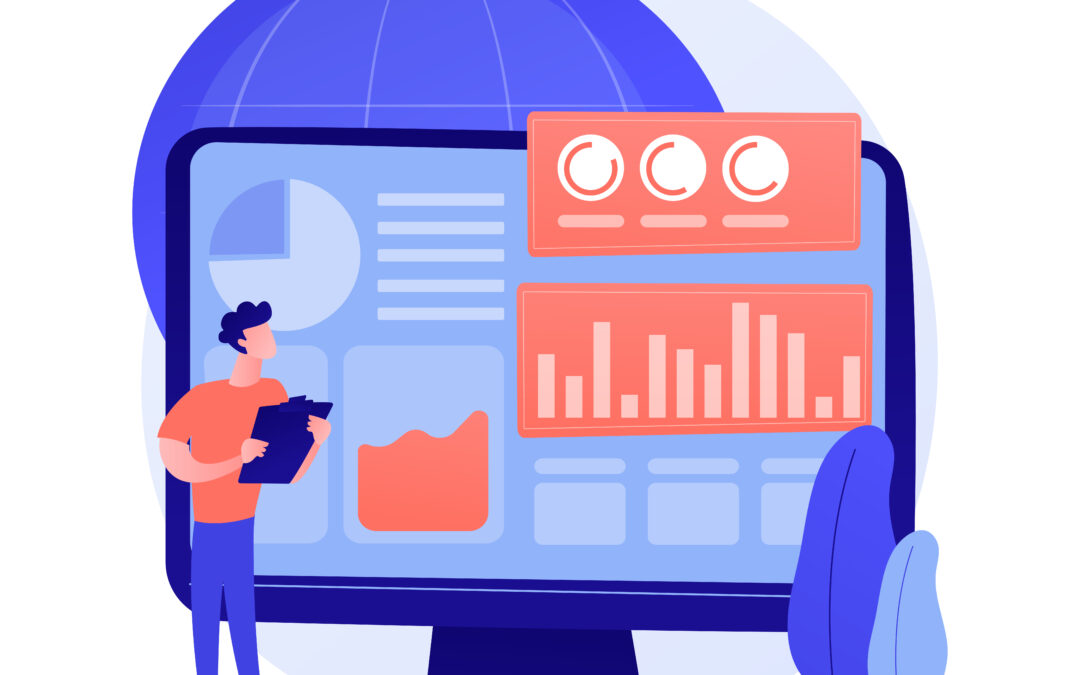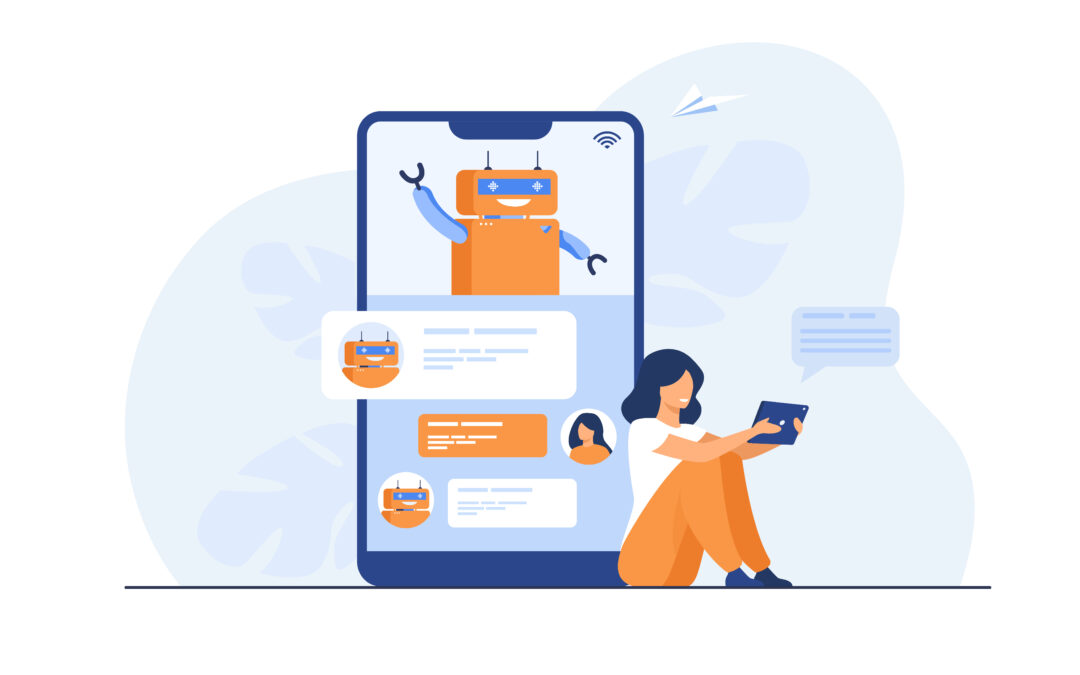
by Huenei IT Services | Mar 4, 2024 | Artificial Intelligence
The rise of conversational chatbots and virtual customer assistants provides a tantalizing promise for the future of automated customer support.
Yet the vast majority of chatbots and AI-powered conversational tools still struggle to move beyond their narrow scripted domains. But what if AI could go deeper? While chatbots have been instrumental in automating basic customer interactions, Generative AI expands the horizon, offering a plethora of applications beyond scripted responses.

Real-world Applications
Let’s take a closer look at how GenAI is reshaping customer support across various industries:
- Automated Ticket Routing: Analyze support ticket details and descriptions to instantly determine the correct assignment routing – whether that’s to a specialist team, specific agent, or automated workflow. Accurately routing higher volumes of tickets serves to dramatically improve overall response times.
- Knowledge Enhancement: Generate contextual knowledge articles, product support pages, and FAQs tailored to precise customer scenarios and pain points. Continually publishing hyper-focused content then creates a powerful information foundation for both customers and agents.
- Response Acceleration: Generate instant personalized draft responses for customer inquiries and issues by ingesting and analyzing historical interactions and resolution data. Agents then simply review and finalize responses while enjoying huge productivity gains.
- Automation Expansion: Streamline low-complexity tasks such as order status checks, refund requests, and appointment scheduling entirely through automated generative conversations. This frees agents to focus on the most complex – and rewarding – customer interactions.
Generative AI Revolutionizing Support
Gen AI and associated techniques sit at the heart of the next era of customer support innovation. As Jorge Attaguile, Founder and COO of Huenei, explains:
“We are working on various initiatives with Generative AI. Our proposal would help in the customer service process, streamlining response times through task automation. Developments vary according to each client’s needs.”
Imagine a scenario where farmers require immediate assistance regarding crop management or supply chain queries. Our ongoing initiative in the agricultural sector leverages Generative AI to provide swift and personalized responses to customer inquiries. By analyzing historical data and tailoring responses to individual needs, Generative AI enhances customer satisfaction while freeing up valuable time for human agents to focus on complex tasks.
In the insurance sector, time is of the essence, especially when addressing policy inquiries or claims processing. Through task automation, Generative AI streamlines low-complexity tasks such as appointment scheduling and FAQ responses. This not only accelerates response times but also enhances operational efficiency, allowing agents to allocate resources towards high-value activities.
In the pharmaceutical sector, where compliance and accuracy are paramount, Generative AI serves as a valuable resource for human agents. By providing real-time suggestions and resources, Generative AI assists agents in resolving complex customer issues efficiently. Whether it’s navigating regulatory policies or recommending product information, Generative AI empowers agents to deliver superior customer service with confidence.
The impacts of implementing AI across the customer support function are multifaceted and compelling. By ingesting historical customer interactions and resolution data, AI can draft personalized responses in real time, accelerating the speed of resolution by 33% on average. Simultaneously, generative models can process up to 5 times the volume of support tickets compared to human-only teams, ensuring more customers get timely responses. This combination of faster response velocities and higher volumes directly correlates with sky-high 89% customer satisfaction scores from early adopters. Teams leveraging AI-generated draft responses also see a 45% increase in first-contact resolution rates – reducing costly back-and-forth exchanges. With more customer issues resolved instantly via personalized self-service conversations, call volumes decrease by up to 18% – further optimizing support costs. The numbers speak for themselves – generative AI delivers better, faster, and more cost-efficient customer experiences.
As Attaguile summarizes, “Generative AI can significantly improve the customer service process by providing quick, personalized, and empathetic responses, as well as automating repetitive tasks.”
Recommendations for Action
To actively explore the transformative potential in customer support, consider the following recommendations:
Evaluate Your Current Workflow: Conduct a thorough assessment of your existing customer support workflow to identify areas where Generative AI can drive tangible improvements.
Pilot Projects and Proof of Concepts: Initiate pilot projects or proof of concepts to gauge the feasibility and effectiveness of Generative AI solutions within your organization.
Collaborate with AI Experts: Partner with experienced AI vendors or consultants who specialize in Generative AI to leverage their expertise and ensure successful implementation.
Continuous Monitoring and Optimization: Continuously monitor and optimize Generative AI solutions to align with evolving customer needs and business objectives, ensuring sustained success in customer support initiatives.
In conclusion, Generative AI represents a paradigm shift in customer support, offering unparalleled opportunities to enhance efficiency, improve customer satisfaction, and drive tangible ROI. By transcending the limitations of traditional chatbots and embracing innovative applications, organizations can elevate their customer service experiences to new heights. Embrace the power of Generative AI today and revolutionize your approach to customer support in the digital age.

by Huenei IT Services | Feb 1, 2024 | Artificial Intelligence
A recent McKinsey study revealed groundbreaking productivity potential from pairing developers with generative AI tools. Test developers saw coding tasks completed up to twice as fast across refactoring, new feature building, and code documentation.

The gains come from generative AI supercharging developers in 4 key areas:
- Expediting manual and repetitive coding work through autocompletion and documentation
- Jump-starting new code drafting with on-demand suggestions
- Accelerating updates to existing code by easing edits
- Enabling developers to tackle unfamiliar challenges with framework guides and snippets
Leading AI coding assistants like GitHub Copilot, TabNine, and Codex allow developers to generate code snippets and entire functions through conversational prompts, drastically accelerating rote programming work. Developers retain oversight to evaluate quality and customize outputs. While focused on Python currently, experts predict advances across languages and platforms. Though optimal use cases differ. Java and C# projects have seen 10-30% shorter timelines leveraging automation for routine changes. Accelerated coding paves the way for faster release cycles, reduces costs, and frees up resources to focus on innovation. But responsible implementation is key amid rising adoption. Organizations must mitigate risks around data privacy, security vulnerabilities, and reputational impacts through governance policies and controls. Upskilling developers on generative AI best practices also improves experience, and retention while maximizing productivity gains. The future is bright for symbiotic human and AI collaboration in software engineering. With disciplined adoption, generative AI unlocks speed, cost savings, and creativity for transformative gains.
Testing First-Hand
So far, we have analyzed how the IT industry is leveraging AI to its advantage. But can we assure that everything described above is true? At Huenei, we incorporated the use of AI tools very early on. Given the promising landscape they offer and the technological revolution they entail, we could not refrain ourselves and had to give it a try. The incorporation of AI into our processes has helped streamline our and our client’s productivity. Through the use of Copilot, the autocomplete tool created by GitHub in partnership with OpenAI, we have managed to make code-writing tasks more efficient. Based on previously generated code, Copilot can autocomplete code lines or blocks. The decision to incorporate it was based on the good metrics achieved, with 40% of its Python suggestions being accepted by developers. It is important to keep in mind that developer intervention will always be necessary to avoid risks due to errors. AI has also assisted us in the process of executing unit tests, saving time and resources. Machine learning algorithms can analyze code and automatically generate test cases quickly, identifying possible scenarios and generating relevant data, reducing manual workload and accelerating the process. We have achieved optimization of unit testing by identifying areas of code prone to errors, allowing us to focus our efforts on critical flows. Similarly, code analysis provides us with recommendations on areas to expand testing coverage. By gathering and preparing test data, we have implemented a model that aligns with existing processes. The constant training and monitoring help guarantee risk mitigation. The results have been excellent. Leveraging intelligence represented an exciting opportunity to enhance the efficiency and quality of software development through automation, increasing the reliability of outcomes and reducing costs of the end product.

by Huenei IT Services | May 9, 2023 | Artificial Intelligence
Predictive analytics powered by artificial intelligence have immense potential to revolutionize healthcare and other industries.
By analyzing vast amounts of patient data, AI algorithms can identify individuals at risk for certain diseases and predict which treatments will be most effective for each patient. In this article, we explore how AI-enabled predictive analytics tools can help healthcare organizations achieve key objectives.
Detecting Diseases Earlier
One major healthcare goal is detecting diseases at the earliest stages when they are most treatable. AI predictive analytics support this mission by pinpointing patients likely to develop illnesses based on risk factors in their data. Doctors can then take preventative action with lifestyle changes or early interventions before diseases progress, improving outcomes.
Improving Patient Outcomes
Healthcare aims to enhance patient outcomes. AI predictive analytics support this by forecasting how patients will likely respond to different treatments. Doctors can then customize treatment plans to each patient’s predicted needs, boosting the chances of successful therapies.
Reducing Costs
Lowering healthcare expenses is a constant pursuit. AI predictive analytics curb costs by reducing ineffective therapies. Algorithms analyze patient data to determine optimal treatments, avoiding expensive trial-and-error approaches.
Enabling Personalized Medicine
Precision medicine is rising, with treatments tailored to individuals. AI predictive analytics are key, assessing genetics, lifestyles, and health histories to create personalized plans. This leads to more targeted, effective care.
Boosting Population Health
AI predictive analytics also identify health trends across populations by processing large datasets. Providers can then develop focused interventions to boost community-wide outcomes.
At Huenei, we specialize in ethical, privacy-focused AI development including predictive analytics. Our solutions enable organizations to leverage AI while protecting patient data through strong security policies. Contact us today to explore how our AI expertise can help your healthcare organization pursue vital goals.

by Huenei IT Services | May 6, 2023 | Artificial Intelligence
How can you make a Chat GPT integration with OpenAI models into a software development successfully?
Technology advances by leaps and bounds and provides us with more solutions and possibilities to explore in the world of development, which can take us to unimagined places. The need to be constantly at the forefront of this range of possibilities, leads us to be in training and learning 24/7, which allows us to incorporate new expertise to, for example, integrate OpenAI models within projects with cutting-edge technology, such as a Chat GPT integration.
In this blog post we want to share with you how together with one of our large clients we have managed to implement a concrete business case where we made a Chat GPT integration into a custom software solution.
The objective of the application is to provide a dynamic and flexible training platform for the sales force of a renowned pharmaceutical laboratory, with the ability to obtain online information without the need to perform previous data uploads, saving costs and time.
The software solution, beyond including standard user, group and profile administration functionalities, contains modules related to training management: roles, suggested exams per role, exam form and results tracking per exam, per role and per group.
The important innovation we achieved is the integration with Chat GPT combining two of its main functionalities: Information Search and Text Analysis.
After a series of concept tests carried out by our team of Prompt Engineers together with business specialists on the client’s side to refine the parameters that allow us to obtain information in an accurate, reliable and fair way in terms of the amount of bytes sent and received to optimize costs, we concluded the following:
- We use “Information Search” to obtain online information related to drug types, typical information contained in a drug package insert.
- We use “Text Analysis” to compare the text of the information obtained versus the text of the answer entered by the user and according to the % of accuracy obtained we give a score to his answer.
The sum of your scores will give you a final result that is recorded and will be part of your training record through integration with your LMS (Learn Management System).
The results are amazing with a tremendous positive impact for the client in terms of cost and time due to the high degree of automation of the process for training your sales force.

by Huenei IT Services | May 6, 2023 | Artificial Intelligence
Organizations are constantly seeking ways to boost productivity, streamline processes, and improve customer experience; Generative AI is helping them achieve that thanks to OpenAI benefits.
Generative AI can be particularly useful in business software applications in several ways. Let’s go through some OpenAI benefits:
- Data Analysis: Generative AI can be used to analyze large amounts of data and identify patterns and trends. This can help businesses make better decisions and optimize their operations. For example, generative AI can be used to analyze customer data to identify buying patterns and preferences, which can help businesses tailor their marketing strategies to specific customer groups.
- Personalization: Generative AI can be used to personalize the user experience in applications by generating customized content for each user. For example, a news application can generate personalized news articles for each user based on their reading habits and interests.
- Training: Generative AI can be used to create customized content training in many subjects for different departments of your organization. (Sales force, technical training, etc.)
- Predictive Maintenance: Generative AI can be used to predict equipment failures and maintenance needs by analyzing data from sensors and other sources. This can help businesses avoid costly downtime and reduce maintenance costs by performing maintenance only when needed.
- Regionalization: Generative AI can be used to regionalize your app to different languages and expand its global reach.
Generative AI can help businesses streamline operations, reduce costs, and make better decisions by leveraging the power of data analysis and machine learning. However, businesses must exercise quality control over the generated content to ensure its accuracy and consistency.
In conclusion, Generative AI is proving to be a game-changer for businesses looking to improve their operations and customer experience. OpenAI benefits organizations by providing them with advanced data analysis, personalization, training, predictive maintenance, and regionalization capabilities. By leveraging these benefits, businesses can increase productivity, reduce costs, and make better decisions. However, it is crucial for businesses to ensure the accuracy and consistency of the results through quality control measures. With OpenAI model-powered development services, businesses can create customized models that deliver real results and take their operations to new heights.
As a provider of OpenAI model-powered development services we can help you create custom models that deliver real results and take your business to new heights.







